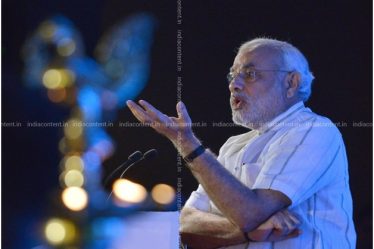
India celebrates the birth anniversary of Guru Gobind Singh—the 10th Guru of Sikhs—on January 2 every year.
Prime Minister Narendra Modi on January 2, 2019, greeted people on the 353rd birth anniversary of Guru Gobind Singh. He took to Twitter to pay tribute to Gobind Singh. He wrote, “We bow to the venerable Shri Guru Gobind Singh Ji on his Prakash Parv.”

The PM also posted a brief video on Gobind Singh Ji, describing how he fought against injustice and caste discrimination. He said, “Gobind Singh’s philosophy and ideals are relevant for the “New India”.
President Ram Nath Kovind also paid tribute to the 10th Guru of the Sikhs. He tweets, “Homage to Guru Gobind Singh Ji on his birth anniversary. He devoted his life to serving the people and upholding the values of truth, justice and compassion. The life and teachings of Guru Gobind Singh Ji continue to inspire us.”
Guru Gobind Singh Biography
A spiritual master, warrior, poet and philosopher, Guru Gobind Singh was born in 1666 in Patna, Bihar in the Sodhi Khatri family. He was the only son of ninth Guru of Sikhs Guru Tegh Bahadur, and Mata Gujari. When Gobind Singh’s father was beheaded for refusing to follow Islam, Guru Gobind Singh was formally made the leader of the Sikhs when he was just 9-year-old, becoming the 10th Guru of Sikhs.
Gobind Singh’s birth name was Gobind Rai, and a shrine named Takht Sri Harimandar Sahib marks the site of the house where he was born and spent the first four years of his life.
In 1670, Guru Gobind Singh’s family returned to Punjab, and in March 1672 they moved to Chakk Nanaki in the Himalayan foothills of north India, called the Sivalik range, where he did his schooling.
The education of Guru Gobind Singh continued after he became the 10th Guru of Sikhs. He was learning both reading and writing and getting trained in martial arts such as horse riding and archery.

In 1684, Gobind Singh wrote the ‘Chandi di Var’—a legendary war between the good and the evil, in the Punjabi language. He stayed near the banks of river Yamuna in Paonta till 1685.
Guru Gobind Singh had three wives. He was just 10 when he married Mata Jito in June 1677. The couple had three sons— Jujhar Singh, Zorawar Singh and Fateh Singh.
In April 1684, he married Mata Sundari when he was 17-year-old. The couple had one son, Ajit Singh.
In April 1700, Guru Gobind Singh married Mata Sahib Devan and he was 33-year-old at that time. The couple had no children, but Mata Sahib Devan played a powerful role in Sikhism. Guru Gobind Singh declared her as the ‘Mother of the Khalsa’.
Guru Gobind Singh as Religious Guru
Guru Nanak founded Sikhism in 1469 and was the first Guru of the Sikhs. He was succeeded by nine gurus. Guru Gobind Singh, the last of the ten Gurus, transformed the Sikh faith. In 1699 he created the Khalsa (which means to be pure), a community of the faithful who wore visible symbols of their faith and trained as warriors. Today the Khalsa comprises all practising Sikhs.
Guru Gobind Singh succeeded his father Guru Tegh Bahadur when he was just 9-year-old. His teachings were different from his predecessors – he believed that no power could exploit the Sikhs.
Gobind Singh spent his childhood years studying Persian and Sanskrit and was trained in the art of war. He aimed to uphold right everywhere and destroy sin and evil. In 1699 Gobind Singh chose the festival day of Vaisakhi as the time to transform the Sikhs into the Khalsa, a family of warrior saints.
Guru Gobind Singh introduced many of the customs that are practised by the Sikhs even today.
Sikhs who are initiated through the Amrit ceremony become Amritdhari. They take new names and wearing the 5 Ks becomes mandatory for them. These 5ks are five physical symbols that Sikhs must wear.

Guru Gobind Singh is credited with the Dasam Granth whose hymns are a holy part of Sikh prayers and Khalsa rituals. Gobind Singh is also credited as the one who finalised and enshrined the Guru Granth Sahib as Sikhism’s main scripture and eternal Guru. He avowed the Sikh holy book as his successor instead of a human being. The Guru Granth Sahib would therefore be the guide for the Sikhs forever and Sikhs also respect the Granth Sahib as a human Guru.
Images Related to Guru Gobind Singh on India Content
The India Content website has a good stock of images related to Guru Gobind Singh. The high -quality pictures on the website are available in three sizes-small, medium and large.
You can purchase various other content images from the https://www.indiacontent.in


